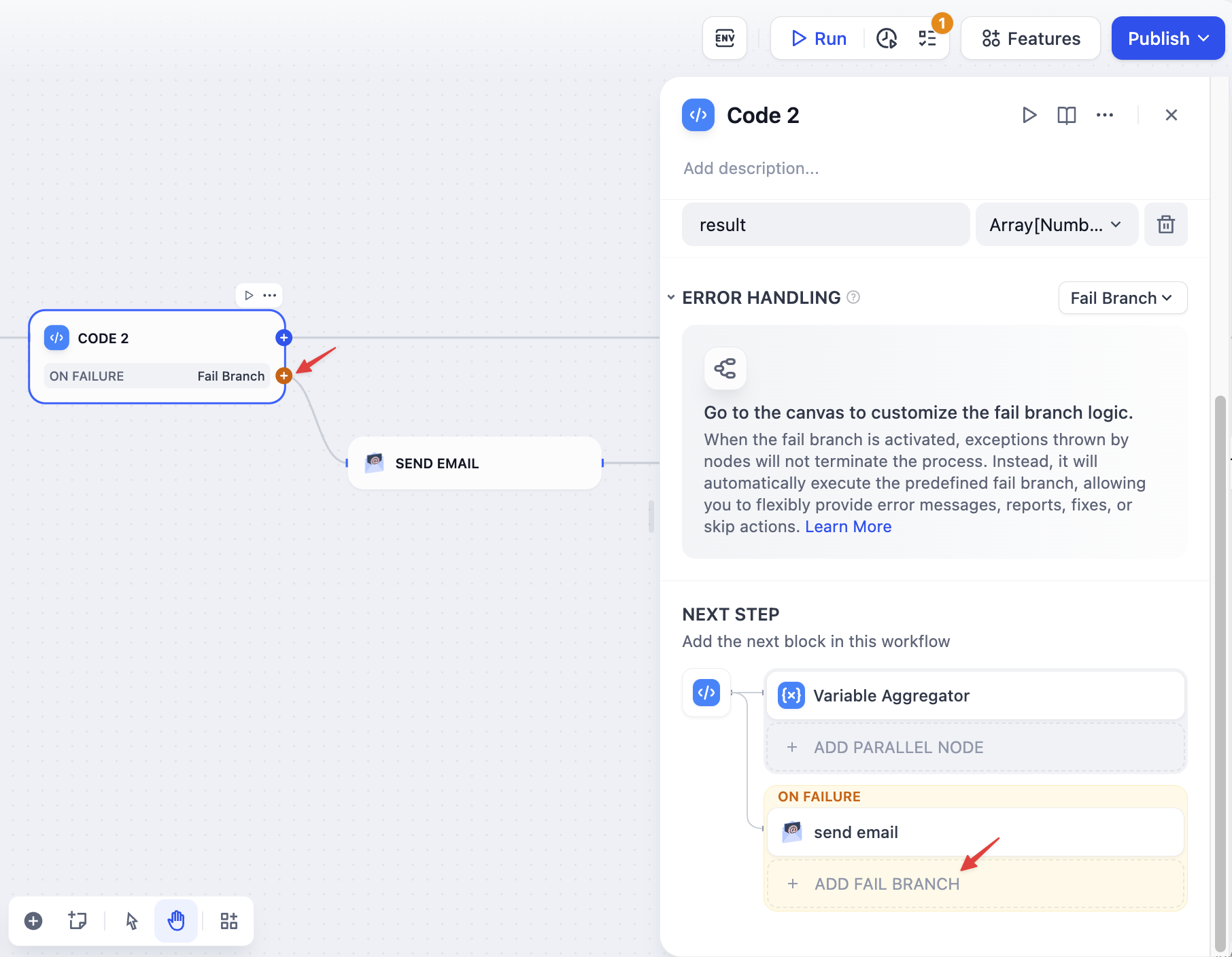
Logic: None
Default option for the node’s error-handling feature. If the node encounters a timeout or an error during execution, it directly throws the node’s built-in error message, immediately halting the entire workflow. The workflow execution is then recorded as failed.Logic: Default Value
This option lets developers customize a node’s error output through the default value editor, similar to the step-by-step debugging approach used in programming. It helps clarify issues, making the debugging process more transparent and efficient. For example:- For
objectandarraydata types, the system provides an intuitive JSON editor. - For
numberandstringdata types, corresponding type-specific editors are available.
array[number], the default value must also be of the array[number] data type.

Logic: Fail Branch
If the current node encounters an error, it triggers the predefined fail branch. When you select the fail branch option, new connection points are provided for the node, allowing developers to continue designing the workflow or add downstream nodes by clicking the bottom-right corner of the node details. For instance, you might connect a mail tool node to send error notifications, providing real-time alerts when issues arise.The fail branch is highlighted with orange.
 A common approach to handling errors is enable fail branch on nodes. These nodes can address issues, and the corrected outputs can be merged back into the main flow by using variable aggregation nodes to ensure consistency in the final results.
A common approach to handling errors is enable fail branch on nodes. These nodes can address issues, and the corrected outputs can be merged back into the main flow by using variable aggregation nodes to ensure consistency in the final results.
Exception Variables
When the Default Value or Fail Branch is selected for a node’s error handling, the node will transfer the error information to the downstream nodes using theerror_type and error_message exception variables when it encounters an error.
| Variable | Descriptions |
|---|---|
error_type | Error Types. Different types of nodes come with distinct error types. Developers can design tailored solutions based on these error identifiers. |
error_message | Error information. Specific fault information is output by the abnormal node. Developers can pass it to the downstream LLM node for repair or connect to the mailbox tool to push information. |

